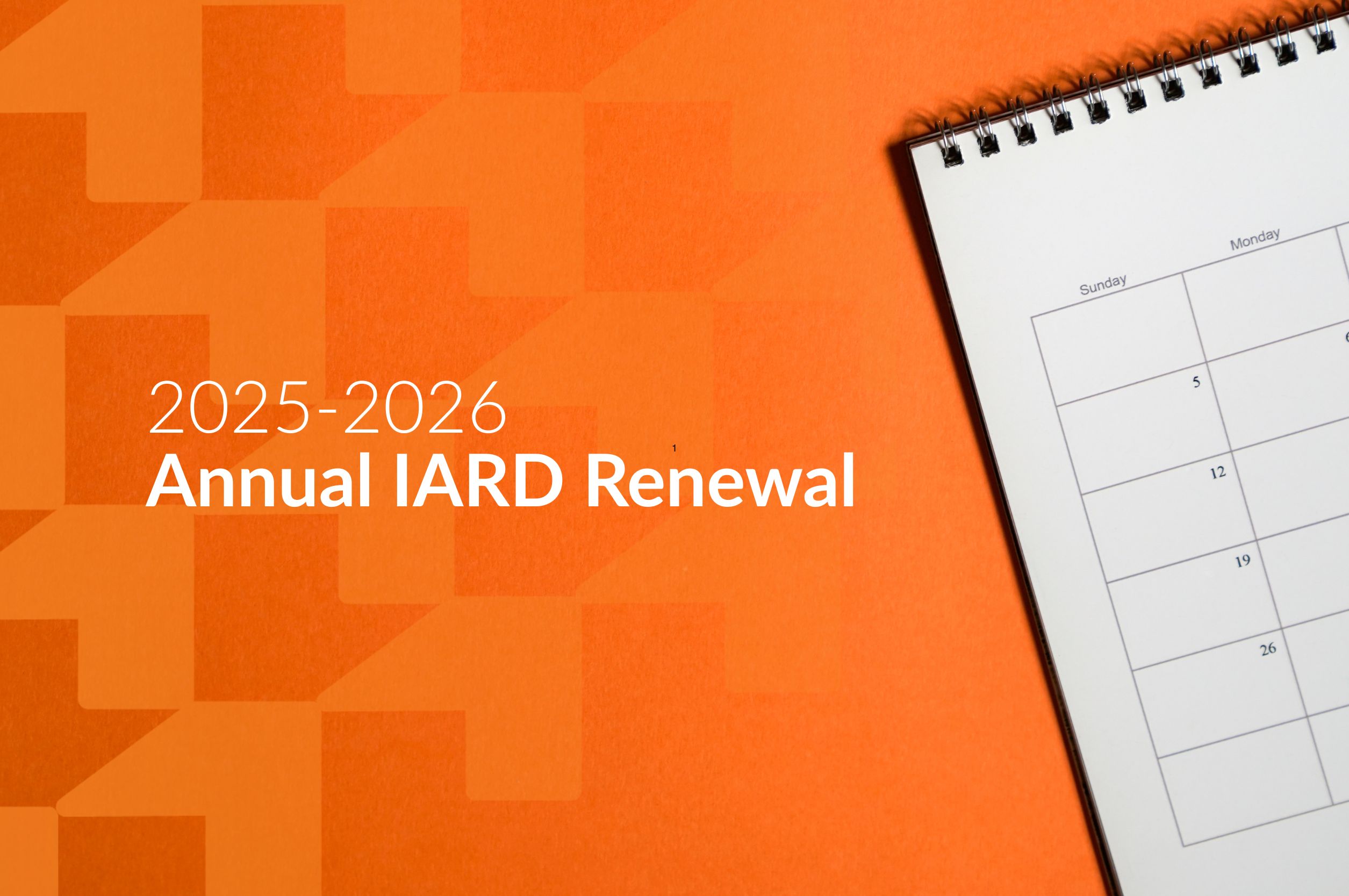Having a website for your RIA firm is essential. But just how critical is it for growing your firm? According to a recent eMoney Consumer Marketing Survey, 98% of respondents indicated that a firm’s website played an important role when choosing a financial advisor.
This finding should be pretty eye-opening to any investment advisor who still operates a firm without this digital asset or neglects to invest in the resources necessary to maintain and optimize their existing site. However, this statistic isn’t too shocking when considering a website’s vital role in day-to-day business.
Your website is the hub of your RIA firm’s digital identity. It’s where clients and prospects learn more about who you are and what you offer. For many prospective clients, your website is the first, and often last, touch point they have before scheduling a consultation.
As a first impression, your website’s design, imagery, and messaging matter. Additionally, your site’s overall organization and ease of use speak volumes about your advisory firm. Whether you like it or not.
And while there are at least six specific points you should consider when designing your website, there are also four pages you’ll need to create carefully.
In this article, we break down the four most crucial marketing pages on an RIA firm’s website and provide tips on improving these pages.
What Are the Most Important Pages on Your RIA Firm’s Website?
According to a study conducted by XY Planning Networks, there are four primary pages retail investors look at when evaluating RIA firms. These pages are:
- Homepage
- About Page
- Blog Post Page
- Services & Solutions Page
An RIA firm’s website homepage is the most popular and prominent page, so this ranking shouldn’t be a surprise.
When you think about how we make purchase decisions, it makes sense that the about, services, and specific blog posts rank as the remaining pages. After all, prospective clients want to know about the firm’s background and how the firm can help them. They also want to understand the organization’s area of expertise and thought process.
Now that we’ve identified the four most essential pages, let’s walk through how you can optimize these pages.
How to Optimize the Four Most Important Pages on Your RIA Firm’s Website
Optimizing your website is necessary for any RIA with significant growth goals. By taking the time to finetune these pages on your website, your firm can:
- Improve its ranking on leading search engines
- Establish a stronger first impression with potential clients
- Differentiate itself from its competition
- Communicate how and whom your firm can help
- Build trust and authority (even without using testimonials)
- Increase leads
- Attract advisors and employees
Not every advisor’s website is the same or needs the same level of attention. However, the following recommendations can be used by most RIAs to help them improve their online presence.
If you have a specific question about your site or would like to schedule a website evaluation, we’d encourage you to contact us.
Improving Your Homepage
Do you know what your website visitors and Google have in common? Both use your homepage as the jumping-off point to evaluate and understand your business. And if you fail to make a favorable first impression, you risk losing their attention.
With this in mind, your homepage should focus on differentiating your RIA firm and communicating whom you help and how it will benefit them. For example, if you specialize in assisting dentists to reach their financial goals, you should clearly state that on your homepage.
As a first step in optimizing your homepage, you should review this page through the eyes of the people you want as clients. As an aside, if you don’t have a target audience, get one. Developing a niche strategy is one of the best things you can do to grow your firm.
When evaluating your homepage, ask yourself:
- Will our potential clients understand what we do?
- Will they know how our services will benefit them?
- Are we addressing their most common questions?
- Do they know where to go for additional information?
- If this wasn’t your firm’s website, would you hire/trust this company based on the look and feel of its homepage?
In addition to reviewing the homepage copy for clarity, you should also:
- Use relevant imagery. What does drone footage of an empty river have to do with your firm? When selecting images, try to use your own photos. If you need to hire a professional photographer, do so.
If you’re trying to convey a message, like providing peace of mind, include images of people that best resemble your target audience. Again, the point of imagery is to help the user connect your services with the things they care about.
- Avoid clutter, and use whitespace. It’s tempting to list all of your RIA firm’s services, fee structure, and history on your homepage, but that can easily overwhelm a prospective client. Make sure you are positioning the most relevant information on your homepage, and display this information in an easy-to-read format with plenty of white space.
- Use strong Call-to-Action (CTAs) buttons. Using CTAs makes it clear to the user where they are supposed to go and what they are supposed to do when visiting your website.
Using solid CTAs, like “Start Planning,” “Download the Guide,” or “Learn More” helps the user find relevant information more quickly and leads them closer to finding solutions.
- Make the Navigation Menu Simple and Clear. Often, prospective clients use the firm’s home page to find a specific page on your website. You should ensure your primary navigation menu is simple and lists only the most relevant pages.
Making your homepage more appealing, relevant, and easy to navigate will help your RIA firm make an excellent first impression and improve the user experience for prospective clients. In the next section, we’ll look at how you can improve your firm’s about page.
Creating a Credible About Page
When hiring a financial advisor or investment firm, clients want to know more about the firm and the people who work there. Unlike your website’s other pages, the about page can and should be all about you.
A compelling about page helps the client identify with your brand. Your about page should strike a chord with the prospect, and it should help reinforce their belief that your firm, and more importantly, the people who work there, can help them achieve their goals.
You can establish alignment and credibility with prospects by including the following elements on your about page.
- The Firm’s History
- Staff Photos (with bios & credentials)
- Mission Statement
- Core Values
- Community Involvement
- Industry Affiliations
Please note that not all items listed above must be on your about page. You should also note that your about page doesn’t need to compete with the world’s longest website. Remember, the goal here is to be genuine about who you are and demonstrate why you’d be the appropriate firm to hire.
Building a Better Blog Page
Publishing blog content is an excellent way to increase website traffic, build credibility, and, most importantly, provide readers with helpful information. Sometimes, a blog post can attract more visitors than other pages on your website. (Obviously, this is why we’re discussing how to improve your blog post(s) in this article.)
If you don’t have a blog, we’re not advocating starting one unless you have the resources. But if you have the capacity, a blog can be a great way to market your firm and connect with clients.
Now, there are hundreds of ways to improve your blog (or at least 58, according to SmartBlogger). For the sake of this article, we’ll look at a few steps you can take to improve the user experience, increase readership, and help convert readers to more qualified prospects.
Let’s say you published a blog titled “How to Financially Protect Yourself in a Divorce,” and it’s getting a lot of attention. More than likely, you or other members of your firm have published other divorce-related articles that the visitor might like to read. Using the following tips, you can use the popular post to introduce other pieces to the reader and increase your online exposure.
- Tip #1. Add Social Share Buttons. Social share buttons are a convenient and easy way to have your readers share your content with others. Having others share your content is a great way to gain credibility and gain additional visibility for your firm.
- Tip #2. Recommend Relevant Articles & Resources. There are two easy ways you can recommend additional articles on your site. The first is to embed an internal link or “cross-link” to an article on a supporting topic. The second is to provide a list of relevant articles at the end of the article or in the sidebar of your blog. The second practice is very similar to how Amazon makes shopping recommendations.
The more you can educate the reader on a particular topic, the more they will trust your knowledge and experience, which is critical in a client/advisor relationship. - Tip #3. Embed CTAs on the post. As noted earlier, CTAs help visitors find information and are essential to improving your website’s user experience. When publishing your blog, consider what you want your prospect to do after they read the article. Do you want them to schedule a free consultation, download an eBook, or sign up for an upcoming webcast? Regardless of the next step, communicate what you’d like the visitor to do, then provide CTAs to help them complete the next task.
There are many ways to optimize a single blog post — from writing captivating headlines to using proper SEO practices and eye-catching graphics. It’s important not to get overwhelmed. Remember, small improvements over time have the most significant impact.
Simplifying Your Services Page
According to the advisor website benchmarking study conducted by XY Planning Network, one of the most significant improvements you can make on your RIA firm’s Services page is to list your professional fees.
According to the research, firms that listed their fees reported twice the conversion rate of visitors to prospects. This tidbit of information is sure to get the attention of your business development team.
As a fiduciary, deciding to add professional fees on your services page makes sense, especially if you are one of those firms that list “Transparency” as one of their firm’s core values.
In addition to listing your professional fees, you should carefully consider how you position and promote your services. Far too often, advisors use intricate terms and industry jargon that flies right over the heads of prospective clients. When positioning your services, it’s best to be clear and concise.
Like many professional services, financial services can be challenging to market because you’re ultimately selling your time and experience. Using infographics or other visuals on your services page can be an excellent way to help you demonstrate how you can help prospective clients.
Moving Forward
This article offered a lot of information, and you may feel pressured to make many of the suggested changes simultaneously. If you can incorporate most of these recommendations in a reasonable time frame, your RIA firm’s website will appeal more to prospective clients, hopefully translating into more leads. If you can’t, try to update at least one page at a time, starting with your home page


